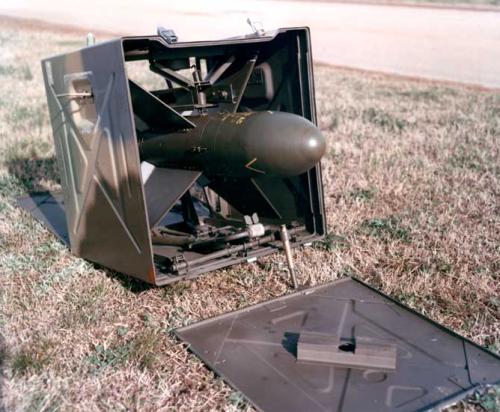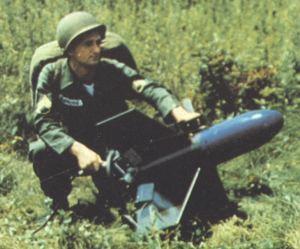Nord MGM-21 (original) (raw)
Nord SS.10/MGM-21
The SS.10 was a French wire-guided anti-tank missile developed in the early 1950s, and briefly fielded by the U.S. Army in 1960.
Development began in France in 1948, when the Arsenal de l'Aéronautique in Châtillon sous Bagneux began to study the possibility of a wire-guided anti-armour missile, based on German wartime work. The missile was designed as a small and cheap spin-stabilized device, and the first rounds were test-fired in 1952. In June 1952, after it had been given the opportunity to analyze a demonstration round, the U.S. Army's Redstone Arsenal began to follow the development of the missile. In 1954, the development team was incorporated into Nord Aviation, and the missile was designated as Nord Model 5203. In the same year the U.S. Army tested prototype rounds of the Nord-5203. Development was completed in 1955, and the missile was fielded by the French Army under the designation of SS.10 (SS = sol-sol = surface-to-surface). One of the first export customers was Israel, which used the missile successfully in the 1956 Sinai Campaign to destroy Egyptian tanks.
The SS.10 missile had a short stubby body with 4 relatively large wings, and was propelled by a two-stage (boost/sustain) solid-fuel rocket motor. It was guided with a small control box via a wire, which was stored and unrolled in the missile, and had a maximum range of 1600 m (5250 ft). Its 5 kg (11 lb) hollow-charge warhead could penetrate 40 cm (16 in) of armour.
 |
|---|
| Photo: U.S. Army |
| SS.10 (MGM-21A) |
U.S. Army plans to procure the SS.10 surfaced again in September 1958, when the Army cancelled its ownSSM-A-23 Dart anti-tank missile, and announced to evaluate the SS.10 and SS.11 (later procured in its air-launched version as AGM-22) as possible replacements. In February 1959, it was finally decided to buy the SS.10 as an interim anti-armour weapon, and in January 1960 the first SS.10 missiles and associated ground equipment were delivered by Nord to the U.S. Army. The Army apparently had no separate designation for the weapon, and also called it the SS.10. The SS.10's career in U.S. Army was short, however, because in May 1961 it was already decided to replace it with the MGM-32 Entac. Phaseout of the missile began in May 1963, and was completed at the end of that year. In June 1963 the official designation MGM-21A had been allocated.
 |
|---|
| Photo: Smithsonian Institution |
| SS.10 (MGM-21A) |
Production of the SS.10 missile in France ended in January 1962, after almost 30000 missiles had been built.
Specifications
Note: Data given by several sources show slight variations. Figures given below may therefore be inaccurate!
Data for MGM-21A:
| Length | 86 cm (33.9 in) |
|---|---|
| Wingspan | 75 cm (29.5 in) |
| Diameter | 16.5 cm (6.5 in) |
| Weight | 15 kg (33 lb) |
| Speed | 290 km/h (180 mph) |
| Range | 1600 m (5250 ft) |
| Propulsion | Two-stage (boost/sustain) solid-fuel rocket |
| Warhead | 5 kg (11 lb) hollow-charge anti-armour |
Main Sources
[1] Bill Gunston: "The Illustrated Encyclopedia of Rockets and Missiles", Salamander Books Ltd, 1979
[2] Redstone Arsenal Historical Information Website
Back to Current Designations Of U.S. Unmanned Military Aerospace Vehicles
Back to Directory of U.S. Military Rockets and Missiles
Last Updated: 3 February 2002